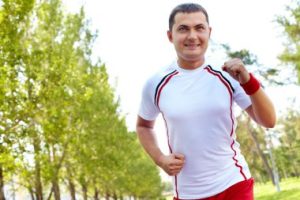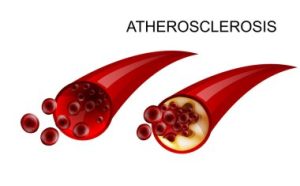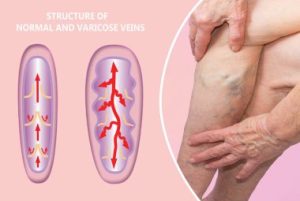
Can Exercise Dissolve Blood Clot (2 Important Exercises)
Can exercise dissolve blood clot, unfurling the knots that bind our vascular narratives and ushering in a symphony of renewed circulatory harmony? In the intricate dance between our bodies and the forces that govern them, the prospect of exercise unraveling the clandestine threads of a blood clot seems almost poetic.
Picture this: a symphony of muscle contractions and heartbeats orchestrating a physiological ballet, seeking to dissolve the very obstacle that threatens the river of life within our veins. As we delve into the realm where science meets motion, the question emerges like a protagonist on a quest – can exercise be the hero that unravels the enigma of a blood clot, setting free the flow of vitality?
Join in this exploration where the rhythm of movement collides with the mystery of coagulation, inviting to contemplate the transformative power of exercise on the canvas of our circulatory system.

Can Exercise Dissolve Blood Clot
Yes, regular exercise can play a crucial role in preventing and potentially dissolving blood clots. Engaging in physical activity promotes cardiovascular health, which is essential in managing and preventing clot formation. While exercise is not a direct solution for dissolving existing blood clots, it significantly reduces the risk of clot formation and improves overall blood circulation.
The Link Between Exercise and Blood Clots
Physical activity, especially aerobic exercises like walking, jogging, or swimming, enhances blood flow and prevents blood from pooling in veins. This dynamic circulation reduces the likelihood of clot formation. Additionally, exercise contributes to maintaining a healthy weight, another factor that diminishes the risk of developing blood clots.
Improving Cardiovascular Health
Regular exercise strengthens the heart, making it more efficient in pumping blood throughout the body. This increased efficiency lowers the risk of blood clots as the blood circulates more smoothly, preventing stagnation and clot formation. Improved cardiovascular health also positively affects blood pressure, reducing the strain on blood vessels and minimizing the chances of clotting.
Enhanced Fibrinolysis through Exercise
Exercise promotes fibrinolysis, the body’s natural process of breaking down blood clots. While not a direct dissolving mechanism, fibrinolysis helps in preventing excessive clot formation and aids in the natural removal of small clots. This process is further boosted by the release of substances during exercise that contribute to maintaining a healthy blood flow.
Understanding Blood Clots
Formation of Blood Clots
Role of Platelets
Blood clotting begins with platelets, small cell fragments that play a pivotal role in wound healing. When blood vessels are damaged, platelets rush to the site, adhering to the exposed tissue and releasing chemicals. This initiates a series of reactions leading to the formation of a temporary plug to stop bleeding. Commonly known as the body’s “first responders,” platelets are crucial in preventing excessive blood loss.
Coagulation Cascade
The coagulation cascade is a complex series of events that solidify the platelet plug into a stable blood clot. This intricate process involves various clotting factors, proteins, and enzymes working together in a sequential manner. From initiation to fibrin formation, the cascade ensures a well-coordinated response. Understanding this cascade provides insights into how the body naturally safeguards against hemorrhage while maintaining vascular integrity.

Types of Blood Clots
Arterial Clots
Arterial clots develop within arteries, the vessels responsible for carrying oxygenated blood away from the heart. Often triggered by conditions like atherosclerosis these clots can obstruct blood flow, leading to serious consequences such as heart attacks or strokes. Recognizing symptoms like sudden numbness or chest pain is crucial for prompt medical intervention.

Venous Clots
Venous clots form within veins, typically in the legs or pelvis. Deep vein thrombosis (DVT) is a common manifestation, where blood clots impede normal circulation. If a clot dislodges and travels to the lungs, it can cause a life-threatening condition known as pulmonary embolism. Swelling, pain, and redness in the affected area are common indicators of venous clots.

By understanding the intricacies of blood clot formation, including the role of platelets and the coagulation cascade, individuals can be more aware of potential risks. Recognizing different types of blood clots, such as arterial and venous, is essential for early detection and timely medical intervention. Stay informed and seek professional advice if you experience symptoms associated with abnormal blood clotting.
Effects of Exercise on the Cardiovascular System
Improved Blood Circulation
Exercise significantly enhances blood circulation, promoting efficient oxygen and nutrient delivery throughout the body. This increased circulation helps improve overall cardiovascular health by reducing the risk of clot formation and optimizing organ function.
Regulation of Blood Pressure
Regular physical activity plays a pivotal role in regulating blood pressure, preventing hypertension. Exercise strengthens the heart, allowing it to pump blood more effectively, and reduces the resistance in arteries, contributing to lower blood pressure levels.
Enhancement of Endothelial Function
Exercise positively impacts endothelial function, the inner lining of blood vessels. This improvement leads to better vasodilation, reduced inflammation, and increased flexibility of blood vessels, promoting overall cardiovascular resilience.
Impact on Blood Vessel Health
Engaging in physical activity has a profound effect on blood vessel health, preventing the development of atherosclerosis and maintaining optimal vascular function. Exercise helps reduce plaque buildup, promoting healthy arteries and minimizing the risk of cardiovascular diseases.
Mechanisms of Exercise in Addressing Blood Clots
Fibrinolysis
Activation of Plasmin
Exercise triggers the activation of plasmin, a key enzyme responsible for breaking down blood clots. Plasmin plays a pivotal role in dissolving fibrin, preventing the formation and growth of clots. Regular physical activity stimulates the release of tissue plasminogen activator (tPA), initiating the conversion of plasminogen into active plasmin. This enzymatic activity is crucial for maintaining healthy blood flow.
Breakdown of Fibrin Mesh
Through exercise, the fibrin mesh within blood clots undergoes systematic breakdown. As the body engages in physical activity, the increased circulation facilitates the delivery of plasmin to the clot site. Plasmin then efficiently cleaves fibrin strands, dismantling the clot structure and preventing potential complications.
Anti-inflammatory Effects
Reduction of Inflammatory Markers
Exercise exerts a notable anti-inflammatory influence by reducing key markers associated with inflammation. C-reactive protein (CRP) and interleukin-6 (IL-6) are notably diminished through regular physical activity. This anti-inflammatory response contributes to an overall healthier vascular environment, minimizing the risk of blood clot formation.
Modulation of Immune Response
Physical activity modulates the immune response, affecting the body’s ability to regulate inflammation. Exercise induces a balanced immune system, preventing an excessive inflammatory reaction that could contribute to clot formation. This modulation enhances the body’s natural defense mechanisms against vascular complications.
Research Studies and Clinical Evidence
Review of Studies Investigating Exercise and Blood Clot Dissolution
Several studies have explored the relationship between exercise and the dissolution of blood clots, aiming to understand the potential benefits of physical activity in managing clotting disorders. Research in this field has consistently indicated that exercise can contribute to the dissolution of blood clots.
Regular physical activity has been associated with improved fibrinolysis, the natural process by which the body breaks down blood clots. Aerobic exercises, such as running, cycling, and swimming, have shown positive effects on clot dissolution by enhancing the production of tissue plasminogen activator (tPA), an enzyme crucial in breaking down clots.
Additionally, resistance training has been suggested to have a positive impact by improving blood flow and reducing inflammation. While these studies collectively highlight the potential benefits of exercise in blood clot dissolution, it’s important to note that individual responses may vary, and consultation with healthcare professionals is essential for personalized recommendations, especially for those with pre-existing clotting disorders.
Clinical Trials Assessing the Impact of Exercise on Thrombosis
Clinical trials assessing the impact of exercise on thrombosis play a crucial role in advancing the understanding of the relationship between physical activity and blood clot formation. Thrombosis, the formation of blood clots, is a complex physiological process with potential life-threatening consequences.
Researchers are conducting clinical trials to investigate whether regular exercise can influence the risk of thrombosis and, intriguingly, if it can contribute to the dissolution of existing blood clots. These trials aim to unravel the molecular and physiological mechanisms underlying the potential benefits of exercise in preventing and managing thrombotic events.
While exercise is known to have numerous cardiovascular benefits, the specific impact on blood clot dissolution is a topic of ongoing exploration. If proven effective, incorporating exercise into thrombosis prevention and treatment strategies could offer a holistic and non-invasive approach to managing this critical aspect of cardiovascular health.
Recommended Types and Intensity of Exercise
Aerobic Exercise
Walking
Walking can play a crucial role in promoting overall cardiovascular health, but it is not a guaranteed method to dissolve blood clots. Exercise, including walking, can enhance blood circulation, reduce inflammation, and lower the risk of developing blood clots. Regular physical activity helps maintain optimal blood flow, preventing the formation of clots in the first place.
However, if someone already has a blood clot, medical intervention is typically required. Doctors may prescribe anticoagulant medications to prevent the clot from getting larger or breaking off and causing a more serious condition like a pulmonary embolism.
While walking can be a beneficial component of a healthy lifestyle and contribute to preventing blood clots, it should not be relied upon as the sole solution for dissolving existing clots. Anyone with concerns about blood clots should consult with a healthcare professional for appropriate advice and treatment.
Jogging/Running
Jogging or running is a popular form of cardiovascular exercise that offers numerous health benefits, but it’s important to approach the idea of exercise as a potential remedy for blood clots with caution. While regular physical activity can promote overall cardiovascular health and reduce the risk of developing blood clots, it is not a cure for existing blood clots.
In fact, intense exercise, especially if not properly managed, may pose risks for individuals with blood clot issues, as it could potentially dislodge a clot and lead to serious complications. It is crucial for individuals with a history of blood clots or those at risk to consult with their healthcare providers before engaging in any strenuous exercise program.
Treatment for blood clots typically involves medication, lifestyle modifications, and close monitoring by healthcare professionals. While exercise is undoubtedly beneficial for preventing various health issues, it is not a substitute for proper medical care in the context of blood clot management.

Resistance Training
Benefits for Circulation
Resistance training, a form of exercise that involves using weights or other forms of resistance to build strength and endurance, has been shown to offer various health benefits, including improvements in circulation. Engaging in resistance training increases the workload on the muscles, which in turn promotes better blood flow throughout the body.
This enhanced circulation can have positive effects on vascular health and may contribute to preventing or reducing the risk of blood clot formation. Additionally, regular resistance training can lead to the development of more efficient and stronger cardiovascular systems, which play a crucial role in maintaining optimal blood circulation.
While exercise alone may not dissolve existing blood clots, it can be a valuable component of a comprehensive approach to cardiovascular health, working in conjunction with medical treatments and lifestyle modifications. It is important, however, for individuals with pre-existing conditions or concerns about blood clotting to consult with healthcare professionals before incorporating any new exercise regimen.
Considerations for Safety
Resistance training is a form of exercise that involves using external resistance, such as weights or resistance bands, to build strength and muscle mass. When considering safety in the context of resistance training for individuals with blood clot concerns, it is crucial to prioritize caution and adhere to certain guidelines.
Firstly, consulting with a healthcare professional before engaging in any form of exercise is imperative, especially for those with a history of blood clots. It is essential to identify any specific restrictions or recommendations based on the individual’s medical history.
Additionally, focusing on low-impact, controlled movements and avoiding exercises that put excessive strain on the vascular system is crucial. Maintaining proper hydration and being mindful of breathing techniques during resistance training can also contribute to overall safety. Regular monitoring of any signs or symptoms related to blood clotting, such as swelling, pain, or changes in skin color, is essential to catch potential issues early on.
Precautions and Contraindications
Individuals at Risk of Exercise-Induced Complications
When engaging in physical activity, it’s crucial to consider precautions for individuals at risk of exercise-induced complications. This includes those with pre-existing medical conditions such as cardiovascular issues, diabetes, or respiratory problems. People with a history of joint injuries or orthopedic concerns should also exercise caution. The importance of recognizing and addressing these risk factors cannot be overstated, as failure to do so may lead to adverse health outcomes.
Consultation with Healthcare Professionals
Before embarking on any exercise regimen, individuals should prioritize consultation with healthcare professionals. This ensures a personalized approach that considers one’s medical history and current health status. Professionals can provide tailored advice, taking into account any contraindications and recommending suitable modifications to prevent potential complications. Such consultations are vital to creating a safe and effective exercise plan that aligns with an individual’s unique health needs.
Monitoring and Adjusting Exercise Regimens
Monitoring and adjusting exercise regimens are essential components of a safe fitness routine. Regular check-ins on physical well-being and responsiveness to the workout help identify potential issues early on. If any discomfort or adverse reactions arise, adjustments can be made promptly. This proactive approach ensures that exercise remains a positive and beneficial experience, promoting overall health without compromising individual safety.
Lifestyle Factors and Blood Clot Prevention
Hydration
Proper hydration is crucial for blood clot prevention. Drinking an adequate amount of water helps maintain optimal blood viscosity, reducing the risk of clot formation. Stay hydrated to ensure your blood flows smoothly, preventing clots from forming in your veins.
Smoking Cessation
Quitting smoking is a powerful lifestyle change for blood clot prevention. Smoking increases the likelihood of blood clot formation due to the chemicals present in tobacco. Make the commitment to quit smoking to significantly decrease your risk of developing dangerous blood clots.
Healthy Diet
Adopting a healthy diet is paramount in preventing blood clots. Incorporate foods rich in omega-3 fatty acids, such as fish and flaxseeds, which can have an anticoagulant effect. A diet high in fruits, vegetables, and whole grains supports overall cardiovascular health, reducing the risk of blood clots.
Weight Management
Maintaining a healthy weight is essential for preventing blood clots. Excess weight can strain the circulatory system, increasing the risk of clot formation. Focus on a balanced diet and regular exercise to achieve and maintain a healthy weight, safeguarding yourself against blood clot-related complications.

FAQ: Can Exercise Dissolve Blood Clot
Q: Can exercise actually dissolve blood clots?
A: Exercise doesn’t directly dissolve blood clots. However, it can improve blood circulation and reduce the risk of clot formation.
Q: What type of exercise is beneficial for preventing blood clots?
A: Moderate aerobic exercises like walking, swimming, or cycling are generally recommended. Always consult a healthcare professional before starting any new exercise routine.
Q: Can vigorous exercise lead to blood clot formation?
A: Intense physical activity may increase the risk of blood clot formation, especially in individuals with pre-existing conditions. It’s essential to balance exercise intensity with individual health considerations.
Q: How does exercise improve circulation and prevent clots?
A: Regular exercise helps maintain healthy blood vessels, reduces inflammation, and promotes blood flow, which can prevent the stagnation that may contribute to clot formation.
Q: Can exercise be considered a treatment for existing blood clots?
A: While exercise is beneficial for overall vascular health, it’s not a primary treatment for existing blood clots. Medical intervention, such as anticoagulant medications, is usually necessary.
Q: Are there specific exercises that should be avoided if I have a blood clot?
A: It’s crucial to consult with a healthcare professional to determine the safest exercise regimen based on your specific health condition. Certain activities may need to be avoided to prevent complications.
Q: How soon after a blood clot diagnosis can I start exercising?
A: The timing depends on individual circumstances. In some cases, healthcare providers may recommend gradual, low-intensity exercises as part of the recovery plan. Always follow your healthcare professional’s advice.
Q: Can exercise worsen symptoms if I already have a blood clot?
A: Intense physical activity may exacerbate symptoms and increase the risk of complications in individuals with existing blood clots. It’s essential to seek guidance from a healthcare provider.
Q: Does hydration play a role in preventing blood clots during exercise?
A: Staying adequately hydrated is crucial for maintaining healthy blood viscosity and preventing dehydration-related complications. However, it’s only one factor in a comprehensive approach to clot prevention.
Q: Are there specific warning signs to look for during or after exercise regarding blood clot complications?
A: Pay attention to symptoms such as persistent pain, swelling, or discoloration in extremities. If any unusual symptoms occur, seek immediate medical attention, especially if you have a history of blood clots.
Conclusion
In conclusion, while exercise plays a crucial role in promoting overall cardiovascular health and reducing the risk of blood clots, the notion that exercise alone can dissolve an existing blood clot is not supported by scientific evidence. Medical intervention, such as anticoagulant medications or procedures, is typically necessary to address existing blood clots.
However, regular physical activity remains an essential component of a preventive lifestyle, helping to maintain healthy blood circulation, lower the risk of clot formation, and contribute to overall well-being. It is imperative for individuals to consult with healthcare professionals for personalized advice and appropriate interventions when dealing with blood clot concerns, recognizing that a holistic approach that includes both medical guidance and lifestyle choices is key to optimal vascular health.